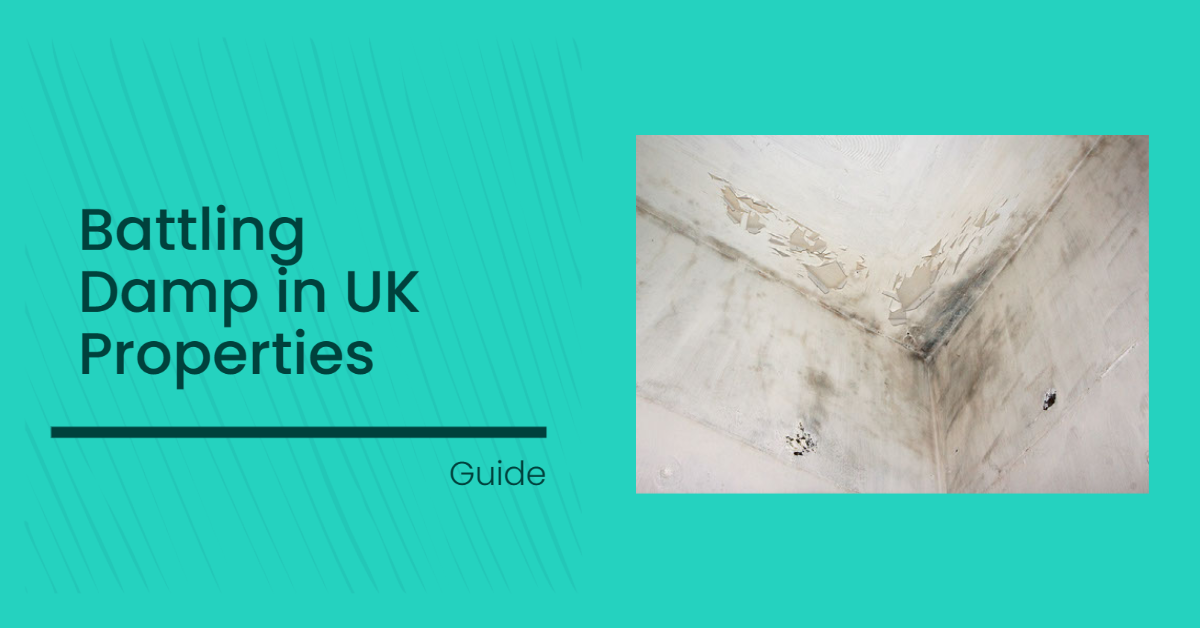Battling Damp in UK Properties: Causes, Ventilation Solutions and Widespread Impact
Battling Damp in UK Properties: Causes, Ventilation Solutions and Widespread Impact
Damp is an all-too-familiar problem that plagues many properties across the United Kingdom. The unique climate, combined with various contributing factors, creates conditions ideal for dampness to thrive.
In this article, we will explore the causes of damp in UK properties, discuss the types of ventilation systems that can alleviate the issue, and shed light on the significant number of affected properties throughout the country.
Causes of Damp in UK Properties
- Condensation: The most common cause of dampness in UK homes is condensation. It occurs when warm, moisture-laden air comes into contact with cold surfaces, such as windows or walls, leading to water droplets forming. Insufficient ventilation exacerbates this issue, as moist air gets trapped inside the property.
- Penetrating Damp: External factors, such as leaks in roofs, walls, or pipes, can introduce moisture into a property, leading to penetrating damp. This type of dampness manifests as damp patches, stains, or even visible water ingress.
- Rising Damp: Groundwater can rise through porous building materials, such as bricks and mortar, causing rising damp. This occurs when properties lack adequate damp-proof courses or when the existing barriers become compromised.
- Lack of Insulation: Insufficient insulation in walls and roofs can contribute to damp problems. Cold spots in the property can lead to condensation, especially during colder months.
Ventilation Systems to Combat Damp
- Mechanical Extract Ventilation (MEV): MEV systems continuously extract stale, moist air from specific areas like kitchens and bathrooms, using fans and ducting. They help control humidity levels, minimizing condensation-related dampness.
- Positive Input Ventilation (PIV): PIV systems introduce filtered air from outside into the property, replacing moist air. By creating a positive pressure environment, they push out stale air and moisture, reducing condensation risks.
- Passive Stack Ventilation: This ventilation method uses natural airflow and pressure differentials to remove stale air. Passive stack systems consist of ducts and vents strategically placed to facilitate the movement of air and minimize condensation.
- Whole-House Ventilation: This comprehensive approach involves combining various ventilation techniques to ensure optimum air circulation and moisture control throughout the entire property. It may include a combination of MEV, PIV, and passive stack ventilation systems.
- Dehumidification with Heat Recovery (DHR): DHR is an energy efficient means of tackling damp and moisture in the air, by using heat recovery 88% of the properties ambient temperature is retained.
The Widespread Impact
Dampness affects a significant number of properties across the UK. While it is difficult to determine an exact figure, various studies and estimates provide insights into the extent of the issue:
- The English Housing Survey reported that, in 2019, approximately 4.8 million homes in England had problems with dampness or mold.
- The UK Climate Change Risk Assessment 2017 highlighted that 6.6% of housing in England (around 2.2 million homes) were at high risk of being affected by surface water flooding, potentially leading to damp issues.
- According to a survey conducted by YouGov in 2018, 35% of respondents in the UK reported experiencing damp or mold in their homes.
Conclusion
Damp in UK properties poses a significant challenge, affecting the quality of life for numerous individuals.
Understanding the causes, such as condensation, penetrating damp, rising damp, and inadequate insulation, is crucial to tackling the issue effectively. Implementing suitable ventilation systems like MEV, PIV, passive stack ventilation, or comprehensive whole-house ventilation can help combat dampness by controlling moisture levels and improving air circulation.
It is essential for homeowners and landlords to prioritise addressing damp issues, ensuring healthier and more comfortable living conditions for all.

